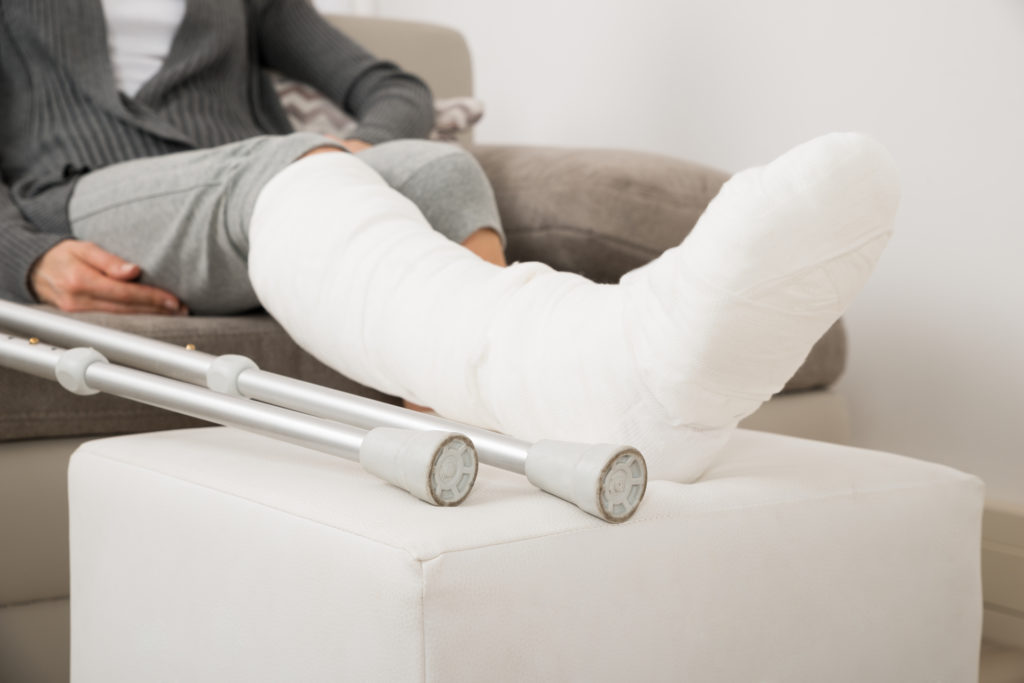Injury Recovery
What is a stress fracture?
A stress fracture is a small crack in the bone that is usually caused by repetitive activities or repeated stresses placed on the bone. These fractures, also known as hairline fractures, are commonly seen in people that play high-impact sports such as basketball. However, it’s not just athletes that can get a stress fracture. Anyone that has just started a new exercise or abruptly increased the intensity of their workout is at risk.
Who is at risk of getting a stress fracture?
Stress fractures do not appear suddenly. They occur from repeated ‘mini traumas’–little episodes where the bone is put under stress. On their own, each of these mini traumas is not large enough to cause a fracture. But when added together, they can cause a small crack in the bone. Here are some people that are at increased risk of developing stress fractures1:
- People that play certain sports like track and field, basketball, tennis, dance, or gymnastics.
- Those who start a new exercise program after a long period of inactivity. It’s easy to develop stress fractures if you do too much too soon.
- Those with weakened bones. Conditions like osteoporosis can weaken your bones and make it easier for stress fractures to occur.
- Post-menopausal women. During menopause, there is a reduction in the hormone estrogen which can cause a weakening of the bones.
- Those with low-quality nutrition. A lack of vitamin D and calcium in the diet can make bones more likely to develop stress fractures.
Symptoms
If you have a stress fracture, at first you might barely notice any pain. Yet over time, it tends to get worse and things like exercising, walking, or even standing become difficult. There may also be some swelling or tenderness around the fracture site. These are all signs that you should contact your doctor as soon as possible.
Diagnosis
Doctors can sometimes diagnose a stress fracture just from your medical history and a physical exam. Usually, they will need an x-ray, bone scan, or MRI to confirm the extent of the fracture.
Treatment
The treatment of a stress fracture usually depends on the severity of the fracture. After your doctor examines you and does an x-ray they will have a much better idea of what kind of treatment you need. Treatment options can range all the way from rest (for mild fractures) to surgery (for complex or non-healing fractures).
As a general rule the best treatment for a stress fracture is the following:
- Rest – rest the affected bone and try to limit the amount of pressure placed on it. This may mean staying off your feet or using crutches for a short while.
- Elevation – elevate the affected area. So if it’s your ankle, leg, or arm, then prop them up with a pillow. Elevation also helps to reduce the amount of pressure placed on the bone.
- Pain medication – Over the counter medications like aspirin or Tylenol may help ease the worst of the pain. Be sure to speak to your doctor first about the appropriate medications for you.
Five tips to help prevent stress fractures1
- Stress fractures commonly develop in people who have dramatically increased their level of physical activity after a long period of inactivity. To prevent this, start off slow. Experts recommend that you never increase your exercise intensity by more than 10% per week.
- Before any physical activity be sure to warm up and stretch for a few minutes. If possible, take frequent breaks to give your body a rest.
- If you feel pain during exercise, stop. Don’t push through it. High impact sports and work activities increase your risk of stress fractures.
- Eat right. A well-balanced diet that is rich in calcium, vitamin D, and other minerals will help strengthen your bones. If you struggle to get your daily recommended intake of minerals and vitamins, then consider adding supplements to your diet.
- Don’t wear worn-out training or sports shoes. People who have fallen arches or other anatomical foot problems may benefit from custom orthotics or arch supports in their shoes.
Shop Forte Supplement Products
1- Mayo clinic. Stress fractures. http://www.mayoclinic.org/diseases-conditions/stress-fractures/home/ovc-20232072



I like that you mentioned how women in post menopausal cycle are at risk for bone weakening. My wife has a family history of weak bones and osteoporosis. We want to do all we can to prevent any fractures from menopause.